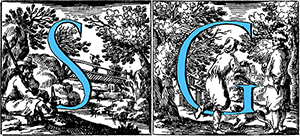
REMBRANDT Harmenzoon Van RIJN
(Leiden 1606 – Amsterdam 1669)
A Dutch painter and engraver, he is generally regarded as one of the greatest European painters and the most important in the history of Dutch art. His period of activity coincides with what historians have referred to as ‘the Dutch golden century’.
Eighth son of nine sons of a wealthy miller Harmen Gerrit Van Rijn, owner of a mill on the banks of the Rhine (hence called ‘Van Rijn’, i.e. of the Rhine).
After passing the admission tests at University, he left his studies to become an apprentice at the workshop of the painter Jacob Van Swanenburgh, active in Leiden. In 1624 he moved to Amsterdam at the atelier of the painter Pieter Lastman who, back from a period spent in Italy, would be very important for the artistic training of the young Rembrandt. After his return to Leiden, in collaboration with his friend and colleague Jan Lievens, he opened a workshop soon attended by numerous pupils.
In 1631 he had already reached a reputation good enough to obtain some recognitions, especially in Amsterdam, where he decided to dwell in the house of an art dealer, Hendrick van Uylen, and marry his niece Saskia. The young wife used to appear very often in her husband’s paintings, which were full of exotic atmospheres in this period, as in the two portraits of Saskia in the role of Flora.
In 1639 he moved to a more prestigious house near the Jewish quarter, now transformed into a museum.
It was there that Rembrandt could use his Jewish neighbours as models for the paintings representing scenes from the Old Testament. Although not yet exposed to economic problems, he had to deal with many family difficulties: first his mother’s death and the premature departure of three of his four sons (only his son Tito reached adulthood) and later the disease and death of his wife Saskia. Subsequently, the artist also suffered from serious financial difficulties that forced him to sell at auction his collections of objects and oriental clothes, as well as the precious collection of prints (in large part of Italian artists), as a payment to his debts and to avoid jail.
Rembrandt had troubled love affairs with two governess called to raise his son Tito, first Geertghe Dircx, locked in a mental hospital after an illness, and then Hendrickje Stoffels with whom he had problematic economic conflicts.
His works, always full of details, refer to biblical scenes, landscapes and portraits, often with monumental settings. Referring to the style of Caravaggio, he has developed a different lighting effect and shadows in his paintings and perhaps even more in his graphic work, so that he was called ‘master of light’.
He has made roughly three hundred etchings, often enriched by a wise use of drypoint, capable of giving the print a greater pictorial appearance. The most frequently treated subjects concern episodes of the Old and New Testaments, portraits and self-portraits, genre scenes and landscapes in which the predominance of nature on the human figure is highlighted.
He left us great masterpieces of paintings, but true gems of art were even more his engravings. Ferdinand Salamon, one of the most important Italian expert, wrote of Rembrandt’s graphic art: “There were in the history of engraving other major figures such as Mantegna, Dürer, Goya; but Rembrandt is unique, solitary and distant, with no possibility of comparison, above all “.
Rembrandt continued painting until the last days of his life and on October 4th, 1669, date of his death, he was buried in a nameless tomb.














